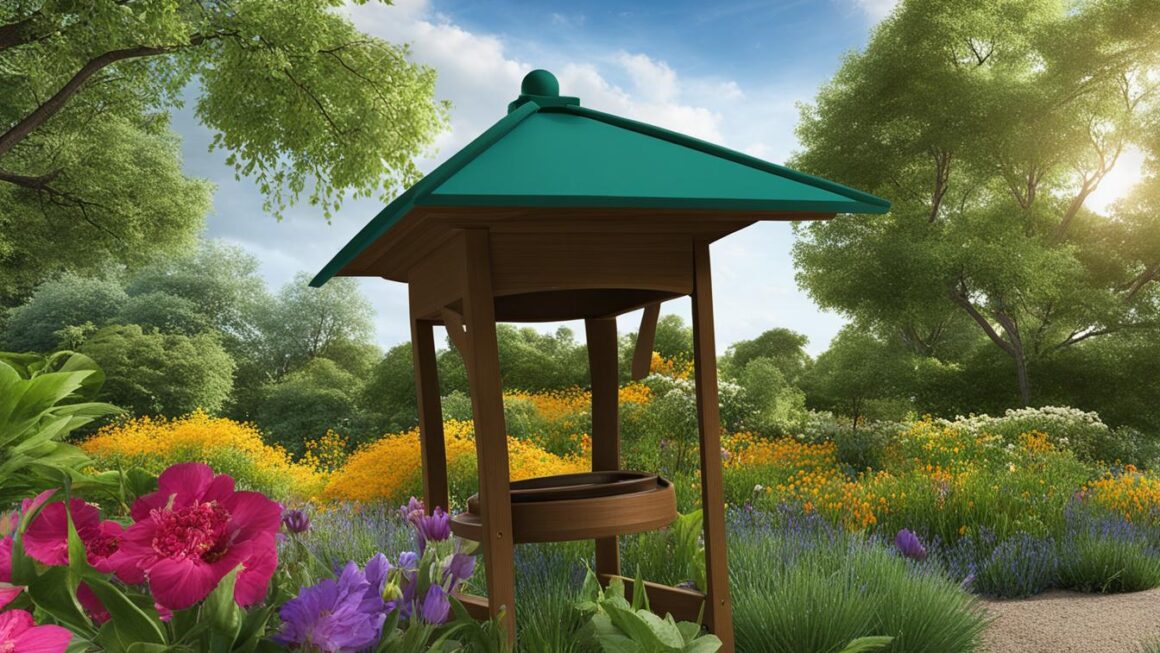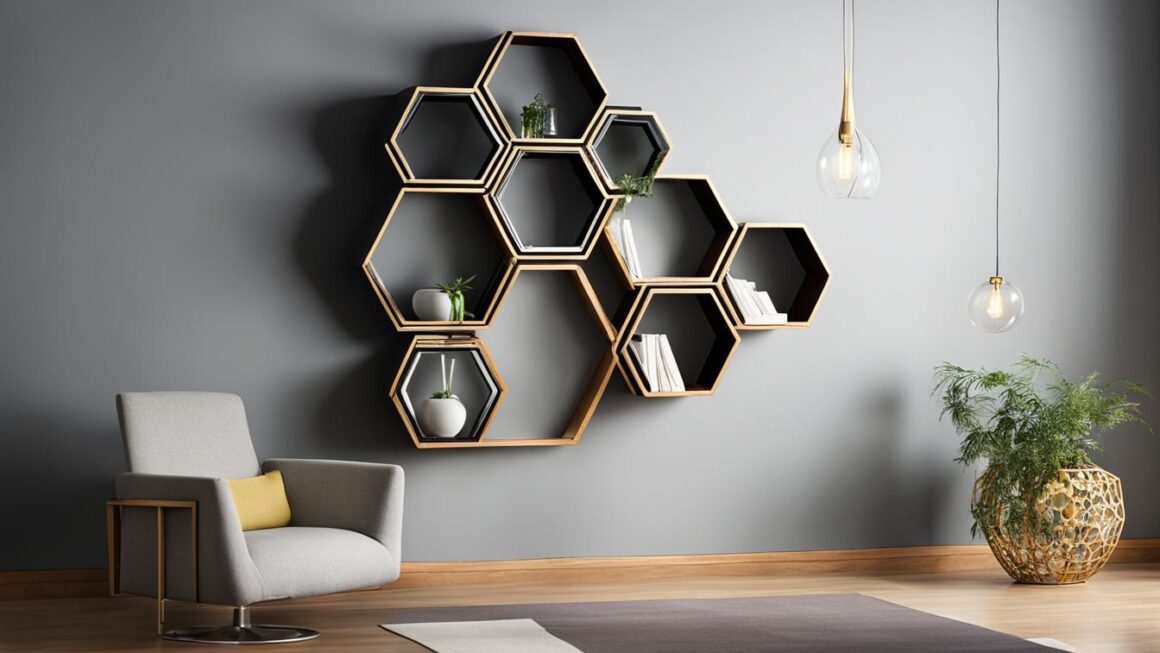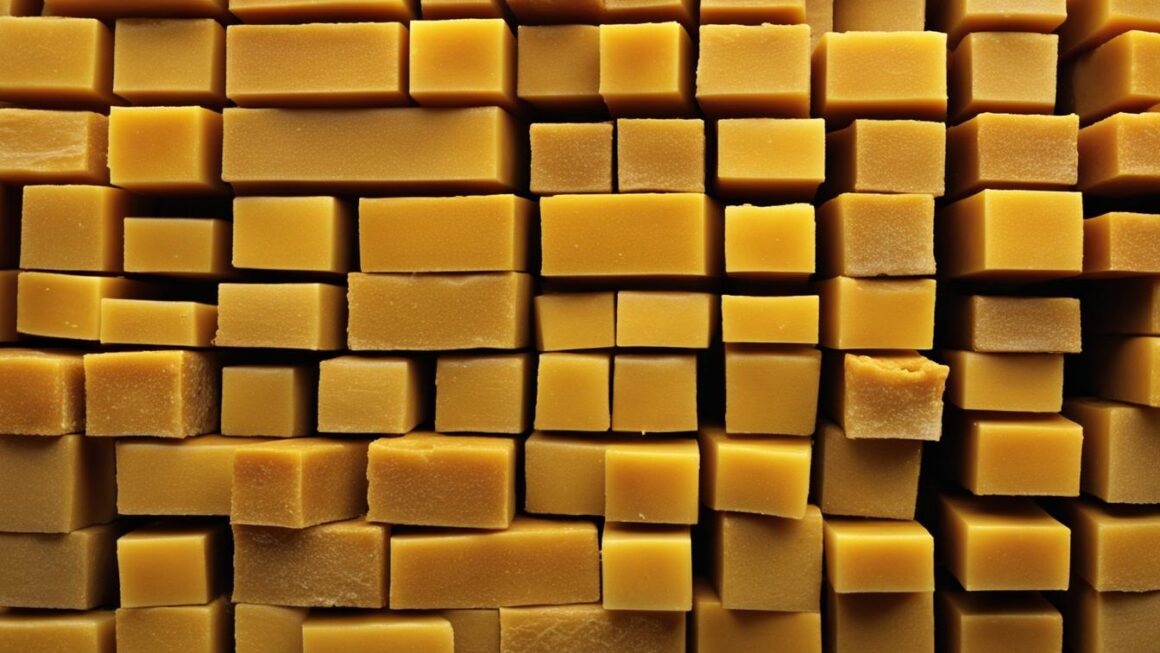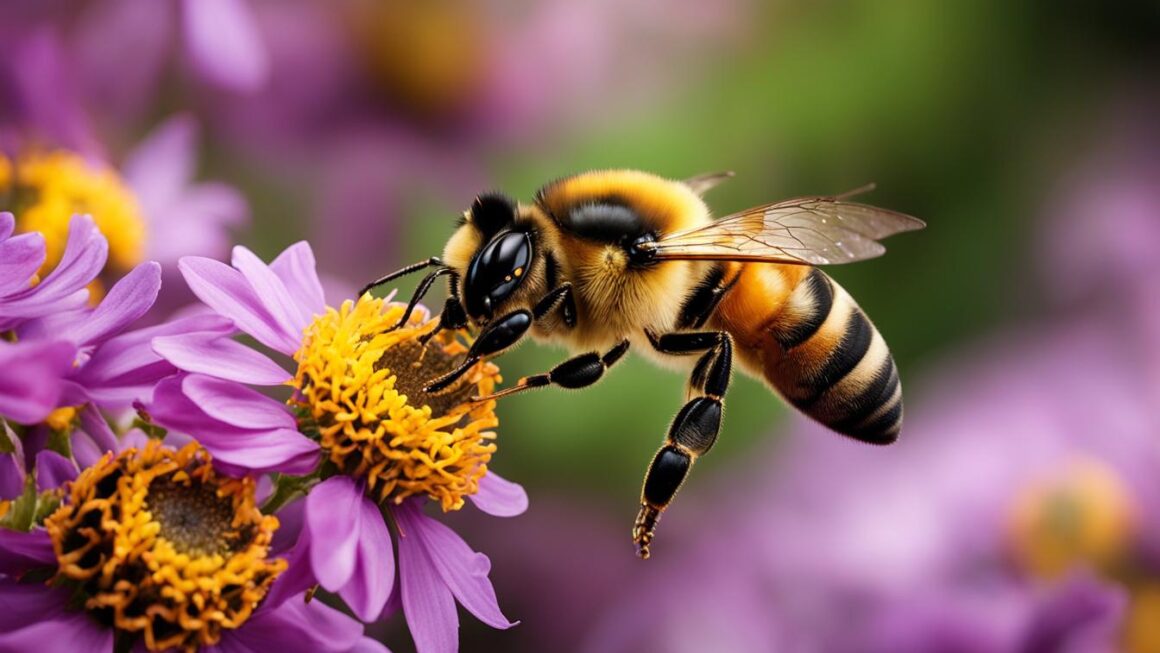Bee pollen feeders are an essential tool for beekeepers seeking to enhance the health and vitality of their hives. These feeders provide a reliable source of nutrient-rich bee pollen, which plays a crucial role in the growth and development of bees. Bee pollen feeders can prevent starvation during periods of honey shortage, stimulate breeding in colonies, and increase the foraging activity of bees, promoting crop pollination.
There are various types of feeders available, including natural feeders, DIY options, and commercially available ones. Each type has its advantages and disadvantages, allowing beekeepers to choose the feeder that best suits their needs and preferences.
Key Takeaways:
- Bee pollen feeders provide a reliable source of nutrient-rich pollen for bees.
- They can prevent starvation and stimulate breeding in bee colonies.
- Bee pollen feeders increase the foraging activity of bees, promoting crop pollination.
- There are various types of feeders, including natural, DIY, and commercially available options.
- Beekeepers should choose the feeder that best suits their needs and preferences.
The Importance of Bee Pollen for Honey Bees
Bee pollen is a vital source of nutrition for honey bees. These tiny insects collect pollen from flowers and mix it with nectar to form bee bread, which serves as a protein-rich food source for the hive. Bee pollen is a treasure trove of vitamins, minerals, proteins, and antioxidants, making it a key component of a bee’s diet. It provides essential nutrients for the growth and development of larvae, supports the immune system of adult bees, and enhances the overall health of the colony.
Without access to sufficient bee pollen, bees may experience nutritional deficiencies, leading to weakened immune systems and decreased productivity. The nutrient-rich content of bee pollen helps to sustain the health and vitality of honey bees, ensuring that they have the energy and resources they need to carry out their essential tasks within the hive.
“Bee pollen is a crucial part of a honey bee’s diet, offering a rich array of nutrients to support their overall well-being. It’s like a multivitamin for bees, providing them with essential vitamins, minerals, proteins, and antioxidants. Without bee pollen, bees would struggle to thrive and perform their important roles in the ecosystem.” – Experienced Beekeeper
By understanding the importance of bee pollen for honey bees, beekeepers can appreciate the significance of providing a consistent and reliable source of this vital nutrient. Bee pollen feeders play a crucial role in ensuring that bees have access to a constant supply of nutrient-rich pollen, especially during periods of pollen scarcity, such as winter or drought. This allows beekeepers to support the health and well-being of their hives, promoting colony growth, honey production, and overall bee vitality.
| Benefits of Bee Pollen for Honey Bees |
|---|
| Provides essential nutrients for growth and development |
| Supports the immune system of adult bees |
| Enhances overall health and vitality |
| Promotes colony growth and honey production |
| Increases foraging activity, aiding in pollination |
Natural, DIY, and Commercial Bee Pollen Feeders
Bee pollen feeders come in various types to cater to the different needs and preferences of beekeepers. Whether you prefer a natural, do-it-yourself (DIY), or commercial option, there is a bee pollen feeder suitable for you. Let’s take a closer look at each type:
Natural Bee Pollen Feeders
Natural bee pollen feeders utilize pollen traps or collection screens placed at the hive entrance to collect pollen as bees enter and exit the hive. These feeders allow bees to bring in the pollen naturally, mimicking their foraging behavior. They provide a convenient way to collect pollen without disrupting the bees’ normal activities.
DIY Bee Pollen Feeders
If you enjoy getting creative and want more control over the design and functionality of your bee pollen feeder, DIY options are a great choice. You can create your own feeder using materials like mesh screens or plastic containers. DIY feeders allow you to adjust the amount of pollen available to the bees and experiment with different designs to suit your specific needs.
Commercial Bee Pollen Feeders
For beekeepers looking for convenience and ease of use, commercial bee pollen feeders are readily available on the market. These pre-made feeders are designed specifically for bee pollen collection and provide a hassle-free solution for supplementing the bees’ diet. Commercial options often feature user-friendly designs and are made from durable materials for long-lasting use.
When choosing a bee pollen feeder, consider factors such as your beekeeping goals, budget, and personal preferences. Each type of feeder has its advantages and disadvantages, so it’s essential to select the one that best suits your needs. Remember, offering a reliable source of bee pollen can enhance the health and productivity of your bees, contributing to the success of your beekeeping endeavors.
How to Use a Bee Pollen Feeder
Using a bee pollen feeder is a straightforward process that can greatly benefit your honey bee colony. Here are some key steps and best practices to ensure successful feeding:
- Placement: Position the bee pollen feeder near the hive entrance, making sure it is easily accessible to the bees. This will allow them to access the pollen easily and reduce the likelihood of contamination.
- Refilling: Regularly check and refill the feeder with fresh bee pollen. Bees require a constant and reliable supply of pollen, so it’s important to maintain an adequate amount.
- Monitoring: Keep an eye on the pollen levels in the feeder and adjust the feeding frequency accordingly. This will help ensure that the bees have enough pollen without overfeeding them.
- Colony Size: Consider the size of your honey bee colony when determining the amount of pollen to provide. A larger colony will require more pollen than a smaller one.
Proper maintenance and cleaning of the bee pollen feeder are crucial to prevent contamination and ensure the health of your bees. Regularly clean the feeder to remove any old or spoiled pollen, as well as any debris or mold buildup. This will help maintain the quality and freshness of the pollen offered to your honey bees.
Remember, bee pollen feeders should supplement natural pollen sources rather than replace them. It is essential to preserve the bees’ natural foraging behavior and provide them with a diverse range of pollen from flowers in the surrounding environment. Using a bee pollen feeder should be seen as a supplemental source of nutrition to support the overall health and vitality of your honey bee colony.
“Using a bee pollen feeder can greatly enhance the health and productivity of your honey bee colony. By following proper feeding techniques and best practices, you can ensure that your bees have access to the essential nutrients they need to thrive.”
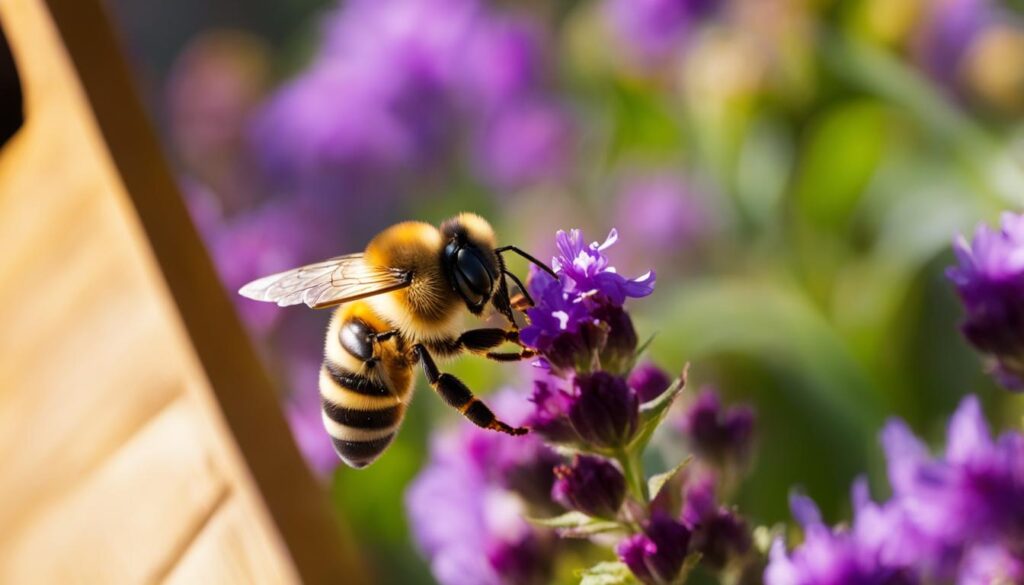
Table: Overview of Bee Pollen Feeding Techniques
| Technique | Description |
|---|---|
| Entrance Feeders | These feeders are attached to the hive entrance, allowing bees easy access to the pollen. They are often convenient to use and offer straightforward pollen distribution. |
| Top Feeders | Top feeders are placed directly over the bee colony, providing an easily accessible and centralized source of pollen. They are typically larger and can hold more pollen than entrance feeders. |
| Frame Feeders | Frame feeders are integrated into the hive’s frames, allowing for direct access to pollen. They can hold a significant amount of pollen and are suitable for larger colonies. |
Using a bee pollen feeder can be a valuable tool in beekeeping, ensuring the health and wellbeing of your honey bee colony. By following these techniques and best practices, you can provide your bees with the essential nutrients they need to thrive and contribute to a productive and successful hive.
Benefits of Using a Bee Pollen Feeder
Using a bee pollen feeder offers numerous benefits for bee health, colony growth, honey production, and increased foraging. Let’s take a closer look at some of these key advantages:
- Enhanced Bee Health: Bee pollen is a rich source of essential nutrients, vitamins, and minerals that are vital for the health and well-being of honey bees. By providing a consistent and reliable supply of nutrient-rich pollen, beekeepers can ensure that their bees have access to the necessary building blocks for growth, development, and a strong immune system.
- Promotes Colony Growth: A healthy and well-nourished colony is more likely to experience rapid growth and expansion. Bee pollen feeders can help stimulate brood rearing, resulting in a larger population of worker bees. This, in turn, increases the overall productivity of the colony and enhances its chances of survival.
- Increase Honey Production: Bees need a sufficient amount of pollen to produce honey. By providing a consistent and abundant supply of pollen, beekeepers can support the honey-making process. Well-fed bees are more likely to produce higher quantities of high-quality honey, benefiting both the beekeeper and the bees.
- Boosts Foraging Activity: Bee pollen feeders can stimulate increased foraging activity among bees. When bees have access to a reliable source of pollen, they are more motivated to leave the hive and collect nectar, resulting in greater pollination of crops and increased overall productivity.
“Using a bee pollen feeder ensures that bees receive a consistent supply of essential nutrients, promoting their overall health and well-being.”
In summary, incorporating a bee pollen feeder into beekeeping practices can have significant positive impacts on bee health, colony growth, honey production, and foraging activity. By providing a reliable source of nutrient-rich pollen, beekeepers can support the well-being of their bees and increase the productivity of their hives.
| Benefits of Using a Bee Pollen Feeder |
|---|
| Enhanced Bee Health |
| Promotes Colony Growth |
| Increase Honey Production |
| Boosts Foraging Activity |
Enhanced Bee Health
Bee pollen is packed with essential nutrients, vitamins, and minerals that are crucial for the health and well-being of honey bees. By providing a consistent supply of nutrient-rich pollen, beekeepers can ensure that their bees have access to the necessary building blocks for growth, development, and a strong immune system.
Promotes Colony Growth
A healthy and well-nourished colony is more likely to experience rapid growth and expansion. Bee pollen feeders can help stimulate brood rearing, resulting in a larger population of worker bees. This, in turn, increases the overall productivity of the colony and enhances its chances of survival.
Increase Honey Production
Bee pollen is crucial for honey production. By providing a consistent and abundant supply of pollen, beekeepers can support the honey-making process. Well-fed bees are more likely to produce higher quantities of high-quality honey, benefiting both the beekeeper and the bees.
Boosts Foraging Activity
Bee pollen feeders can stimulate increased foraging activity among bees. When bees have access to a reliable source of pollen, they are more motivated to leave the hive and collect nectar, resulting in greater pollination of crops and increased overall productivity.
DIY Bee Pollen Feeder Ideas
Creating a homemade bee pollen feeder can be a rewarding and creative project for beekeepers. Not only does it provide a cost-effective solution, but it also allows for customization based on the specific needs of the bees. Here are some DIY bee pollen feeder ideas to inspire your next creation:
- Plastic Container Feeder:
- Mason Jar Feeder:
- Soda Bottle Feeder:
Repurpose a plastic container, such as a yogurt cup or margarine tub, by puncturing small holes in the lid. Fill the container with fresh bee pollen and secure the lid. Place it near the hive entrance to allow easy access for the bees.
Attach a feeding tube to a mason jar lid, using a small piece of flexible tubing or a popsicle stick. Fill the jar with bee pollen and seal it with the lid. Invert the jar, placing the open end of the feeding tube inside the hive or near the entrance.
Cut a small hole near the base of an empty soda bottle. Fill the bottle with bee pollen and screw the cap back on. Hang the bottle upside down near the hive entrance, allowing the bees to access the pollen through the hole.
These are just a few examples of the many creative bee pollen feeder designs that beekeepers have come up with. Feel free to experiment and adapt these ideas to suit your preferences and the unique needs of your bees. Remember to prioritize ease of use, accessibility, and cleanliness when constructing your DIY bee pollen feeder.
Benefits of DIY Bee Pollen Feeders
Creating your own bee pollen feeder offers several advantages. Firstly, it gives you control over the materials used, ensuring the feeder is safe and non-toxic for your bees. Secondly, DIY feeders allow for customization, allowing you to cater to the specific requirements of your hive. Lastly, homemade feeders can be a cost-effective option, especially if you already have materials on hand.
Top-Rated Bee Pollen Feeders on the Market
Beekeepers looking for the best bee pollen feeders have a variety of options to choose from. These top-rated feeders have received positive feedback from beekeepers and offer functionality, durability, and convenience. Whether you are a beginner or an experienced beekeeper, these bee pollen feeders can help enhance the health and productivity of your hive.
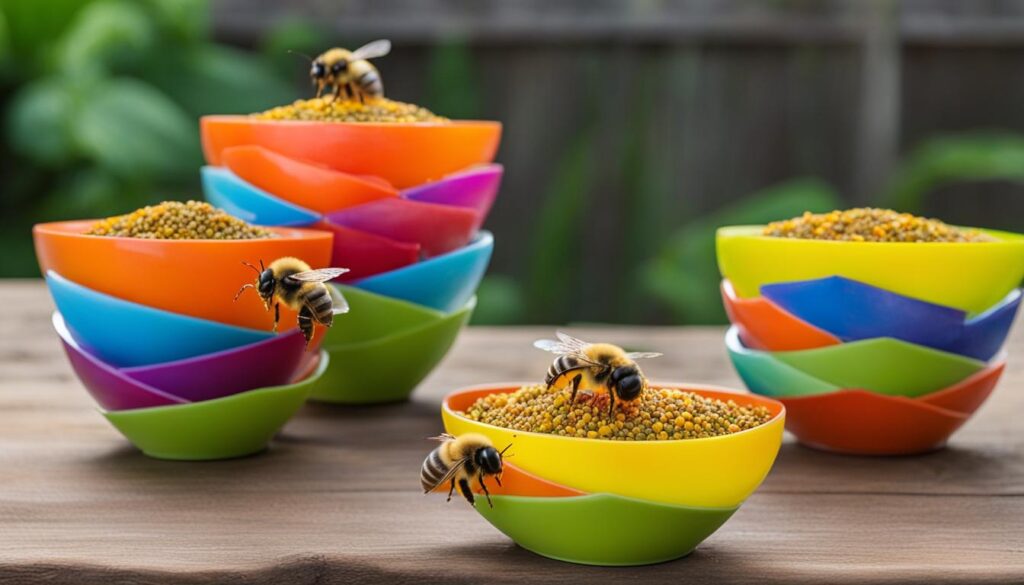
Commercial Bee Pollen Feeders
Commercial bee pollen feeders are designed specifically for efficient pollen collection and easy maintenance. They often feature durable materials, such as plastic or stainless steel, that can withstand outdoor conditions. Some popular options include gravity feeders, entrance feeders, and frame feeders. These feeders are designed to offer easy access to the pollen while preventing contamination and spillage. They are user-friendly and typically come with clear instructions, making them suitable for beekeepers of all levels of experience.
Beekeeper Recommendations
Experienced beekeepers often have valuable insights when it comes to bee pollen feeders. Their recommendations are based on their firsthand experience and knowledge of the needs of the bees. Consulting with fellow beekeepers, joining online forums or local beekeeping associations, can provide you with valuable recommendations for top-rated bee pollen feeders. These recommendations can give you confidence in your purchase and help you find a feeder that meets your specific needs and preferences.
DIY Bee Pollen Feeders
For beekeepers who prefer a more hands-on approach, DIY bee pollen feeders offer flexibility and customization options. By using readily available materials such as plastic containers, mesh screens, or empty bottles, you can create your own feeder to suit your hive’s requirements. DIY feeders can be cost-effective and allow you to experiment with different designs and features. However, it is important to ensure that your DIY feeder is safe for the bees and provides easy access to the pollen without the risk of contamination or spillage.
| Feeder Type | Features | Price Range |
|---|---|---|
| Gravity Feeders | Easy to use, durable, prevents spillage | $10 – $30 |
| Entrance Feeders | Convenient, easy access to pollen, prevents contamination | $5 – $20 |
| Frame Feeders | Large capacity, easy to maintain, efficient pollen collection | $15 – $40 |
When selecting a bee pollen feeder, consider your specific requirements, beekeeping practices, and budget. Top-rated bee pollen feeders provide reliable nutrition for your bees, enhance their health, and contribute to the growth and productivity of your colony.
Potential Risks and Considerations When Using Bee Pollen Feeders
While bee pollen feeders can provide numerous benefits, it is important to be aware of potential risks and considerations when using them. One of the main concerns is the quality of the bee pollen used in the feeders. It is crucial to ensure that the pollen is free from pesticides, pollutants, and other contaminants that could be harmful to the bees. Contaminated pollen can have detrimental effects on bee health and overall colony productivity.
Another risk is the possibility of overdosing on bee pollen. Providing an excessive amount of pollen can be harmful to the health of the bees. It is important to carefully monitor and control the amount of pollen provided based on the size and needs of the colony. Beekeepers should follow recommended dosage guidelines and adjust accordingly.
It is also essential to remember that bee pollen feeders should not replace natural pollen sources for bees. The natural environment provides a diverse range of pollen types and nutritional elements that are important for bee health. Supplementing natural pollen with feeders should be done as a supplemental source of nutrition, rather than a primary food source.
Risks and Considerations Summary:
- Poor quality bee pollen can contain harmful contaminants, so it is crucial to ensure high quality and purity.
- Overdosing on bee pollen can be detrimental to the health of the bees, so it is important to provide the correct amount based on colony size and needs.
- Supplementing natural pollen with feeders should be done as a supplement, not a replacement for natural pollen sources.
In summary, while bee pollen feeders offer numerous benefits, beekeepers should be mindful of potential risks and considerations. Ensuring the quality of the pollen used, controlling the dosage, and supplementing rather than replacing natural pollen sources can help maintain bee health and overall colony productivity.
Bee Pollen Feeders for Supporting Native Bee Populations
Bee pollen feeders not only benefit honey bee colonies but can also play a crucial role in supporting native bee populations. Native bees, such as bumblebees and solitary bees, are vital pollinators that contribute to the health and diversity of ecosystems. By providing specialized bee pollen feeders, beekeepers can help conserve native bee populations and ensure their survival.
Supporting native pollinators is essential for maintaining biodiversity and ecosystem balance. Native bees have specific pollen preferences and foraging behaviors, so it is important to design feeders that cater to their needs. Smaller feeder designs or offering a variety of pollen types can attract and nourish native bees, providing them with the essential nutrients they require for reproduction and survival.
Conserving native bee populations is not only beneficial for the environment but also for agricultural practices. Native bees are effective pollinators of many crops, contributing to crop yield and quality. By promoting the health and abundance of native bees through targeted bee pollen feeders, beekeepers can help ensure the successful pollination of native plants and cultivated crops alike.
| Benefits of Bee Pollen Feeders for Native Bees: |
|---|
| 1. Conservation: Supporting native bee populations contributes to the conservation of biodiversity and ecosystem health. |
| 2. Pollination: Native bees are effective pollinators and play a crucial role in the reproduction of native plants and cultivated crops. |
| 3. Nutrition: Specialized bee pollen feeders provide native bees with the essential nutrients they need for growth, reproduction, and overall health. |
| 4. Ecosystem Balance: Native bees are an integral part of the ecosystem, contributing to the balance and diversity of plant and animal populations. |
By incorporating bee pollen feeders for native bees into their beekeeping practices, beekeepers can make a positive impact on both the environment and agricultural systems. These feeders provide an additional food source for native bees and help ensure their long-term survival in the face of habitat loss and other challenges. Supporting native bee populations is a vital step in conserving our natural resources and promoting sustainable agriculture.
Conclusion
In conclusion, bee pollen feeders are a valuable addition to beekeeping practices, providing essential nutrition to enhance the health and vitality of honey bees. These feeders offer a reliable source of nutrient-rich pollen, supporting colony growth and productivity. Beekeepers can choose from various types of feeders, such as natural, DIY, or commercially available options, based on their preferences and requirements.
When using a bee pollen feeder, beekeepers should consider the quality of the pollen used, ensuring it is free from contaminants that may harm the bees. Proper dosage and maintenance of the feeder are crucial to prevent overdosing and keep the bees healthy. It is important to remember that bee pollen feeders should supplement natural pollen sources, rather than replace them, to maintain a balanced diet for the bees.
Beyond supporting honey bee colonies, bee pollen feeders can also play a role in conserving native bee populations. By providing feeders specifically designed for native bees, beekeepers can contribute to the well-being and survival of these vital pollinators. Supporting native bee populations is essential for maintaining biodiversity and the overall health of the environment.
In summary, bee pollen feeders offer numerous benefits for bee health and the environment. They provide a consistent source of nutrition, promote colony growth and honey production, and can support the conservation of native bee populations. By incorporating bee pollen feeders into their practices, beekeepers can help ensure the well-being of their hives and contribute to the sustainability of pollinators.
FAQ
What is the purpose of a bee pollen feeder?
Bee pollen feeders are used to enhance the health and vitality of bee hives by providing a nutrient-rich source of bee pollen.
Why is bee pollen important for honey bees?
Bee pollen is essential for the growth and development of honey bees, providing vital nutrients such as vitamins, minerals, proteins, and antioxidants.
What types of bee pollen feeders are available?
There are natural feeders, DIY feeders, and commercially available feeders for beekeepers to choose from.
How do I use a bee pollen feeder?
Place the feeder near the hive, ensure it is easily accessible to the bees, and regularly fill it with fresh bee pollen.
What are the benefits of using a bee pollen feeder?
Bee pollen feeders promote colony growth, increase honey production, stimulate foraging activity, and enhance bee health.
How can I make a DIY bee pollen feeder?
DIY bee pollen feeders can be made using materials such as mesh, plastic containers, or empty soda bottles.
What are some top-rated bee pollen feeders on the market?
There are various commercially available feeders such as gravity feeders, entrance feeders, and frame feeders that have received positive reviews from beekeepers.
What are the potential risks of using bee pollen feeders?
Risks include the quality of bee pollen used, the possibility of contamination, and the potential for overdosing on bee pollen.
Can bee pollen feeders benefit native bee populations?
Yes, by using bee pollen feeders specifically designed for native bees, beekeepers can support and conserve native bee populations.

